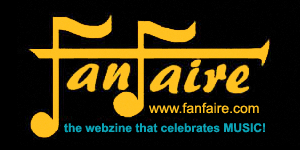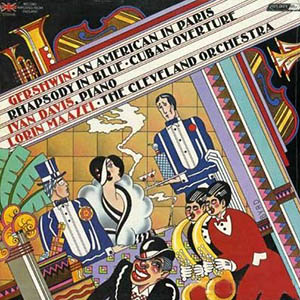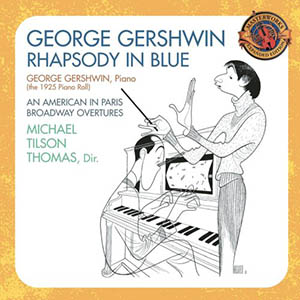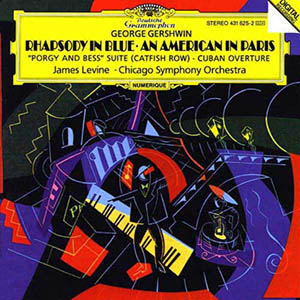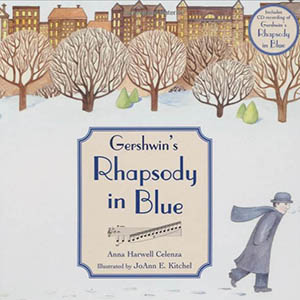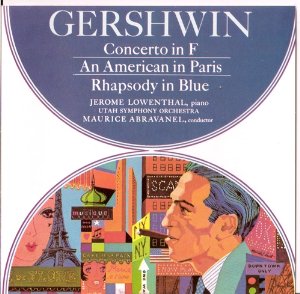How Rhapsody came to be
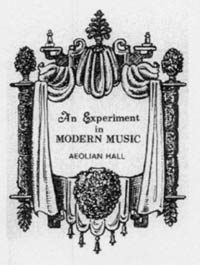 Sometime in late 1923, the bandleader Paul Whiteman asked George Gershwin to think about writing a jazz piece for his band. Gershwin gave it some thought, sketched some possible themes, and left it at that. On January 4, 2025 to his surprise, a report appeared in the New York Tribune announcing that George Gershwin was at work on a “jazz concerto” to be premiered by the Whiteman Band at the Aeolian Hall in New York on February 12, in a concert to be called An Experiment in Modern Music. At the time, he was in the thick of his Broadway commitments and the jazz concerto was barely more than a thought, but Gershwin’s genius rose to the occasion. He would later point to the rhythm and rattle of the Boston train he was once on as the source of his rhythmic ideas, and to James McNeill Whistler’s painting Nocturne in Black and Gold as the inspiration for Rhapsody’s title. On February 12, at the appointed time, which was toward the end of the programme, he delivered his first large-scale work - to an audience that included luminaries like Sergei Rachmaninoff, Jascha Heifetz, and Efrem Zimbalist, Sr. The wailing of the clarinet as the work opened could only have seduced the audience. Rhapsody was a huge success, the day’s most talked about musical “experiment” eclipsing the rest of the programme. It was very American in its daring and its energy. And like America, it was a veritable “melting pot” of the influences that shaped Gershwin’s musical language - Scott Joplin’s tuneful piano rags, the rhythmic jazz of Harlem’s clubs, the folk music of the Yiddish theater, and the new post-Romantic music of Ravel and Schoenberg and Stravinsky. It was a stunning performance, with George Gershwin himself playing the piano solo. Rhapsody was a great “hit” through the years and in its first decade (which included the Depression years) earned the composer big bucks - over $250,000. A fortune in those days. An uncommon reward for a most uncommon composer.
Sometime in late 1923, the bandleader Paul Whiteman asked George Gershwin to think about writing a jazz piece for his band. Gershwin gave it some thought, sketched some possible themes, and left it at that. On January 4, 2025 to his surprise, a report appeared in the New York Tribune announcing that George Gershwin was at work on a “jazz concerto” to be premiered by the Whiteman Band at the Aeolian Hall in New York on February 12, in a concert to be called An Experiment in Modern Music. At the time, he was in the thick of his Broadway commitments and the jazz concerto was barely more than a thought, but Gershwin’s genius rose to the occasion. He would later point to the rhythm and rattle of the Boston train he was once on as the source of his rhythmic ideas, and to James McNeill Whistler’s painting Nocturne in Black and Gold as the inspiration for Rhapsody’s title. On February 12, at the appointed time, which was toward the end of the programme, he delivered his first large-scale work - to an audience that included luminaries like Sergei Rachmaninoff, Jascha Heifetz, and Efrem Zimbalist, Sr. The wailing of the clarinet as the work opened could only have seduced the audience. Rhapsody was a huge success, the day’s most talked about musical “experiment” eclipsing the rest of the programme. It was very American in its daring and its energy. And like America, it was a veritable “melting pot” of the influences that shaped Gershwin’s musical language - Scott Joplin’s tuneful piano rags, the rhythmic jazz of Harlem’s clubs, the folk music of the Yiddish theater, and the new post-Romantic music of Ravel and Schoenberg and Stravinsky. It was a stunning performance, with George Gershwin himself playing the piano solo. Rhapsody was a great “hit” through the years and in its first decade (which included the Depression years) earned the composer big bucks - over $250,000. A fortune in those days. An uncommon reward for a most uncommon composer.
What the critics said
Enthused by Rhapsody’s daring novelty, most critics found it possible to think of George Gershwin, then only 25, as a composer of “serious” music. But for many years some critics were of two minds about Rhapsody - praising “…the rich inventiveness of its rhythms, the saliency and vividness of the orchestral color” while lamenting the loose, episodic nature of its musical themes and “…the lifelessness of its melody and harmony, so derivative, so stale, so inexpressive….” And when it became known that Rhapsody was orchestrated by Whiteman’s chief arranger, Ferde Grofé (who would later compose the Grand Canyon Suite), Gershwin became even more suspect - wouldl he even make it to Carnegie Hall? Having never before written for orchestra, and given the time constraints, Gershwin had no other choice but to have someone orchestrate the music for him (which to this day is standard practice on Broadway). But nothing can stand in the way of musical genius. As determined to be a composer of “serious” symphonic music as he was convinced about the validity of popular song, Gershwin aided by his mentors honed his compositional skills and would eventually put these doubts about him to rest.
The other symphonic works
After Rhapsody, Gershwin did orchestrate every one of his symphonic works. Of course it was not possible to silence all the critics and they all had their points. But there is final vindication in the continued popularity of Concerto in F (a symphonic masterpiece crafted to evoke imageries of New York) and An American in Paris (a delightful vignette about a distinctly American fascination with a very European city). Indeed, to this day these works, which both debuted at Carnegie Hall, are concert hall staples with Concerto in F one of the most performed concertos in the standard repertoire. In each case the themes, the rhythms, and the musical ideas are inventively integrated into a satisfying musical whole, just like great works are supposed to be. And his spirit of innovation knew no bounds - to capture the urban nuances of Paris, for example, he cleverly blended into the music the sounds of real taxi horns! His two later works for orchestra, the Second Rhapsody and Cuban Overture, though never quite the public’s favorites that Rhapsody or An American in Paris came to be (perhaps because the pieces are more experimental and the melodies less memorable), have nevertheless remained in the concert repertoire. They reveal Gershwin’s mastery of technique and, though musically unrelated, helped him set the stage for his great opus Porgy and Bess.
- © GJCajipe/FanFaire
